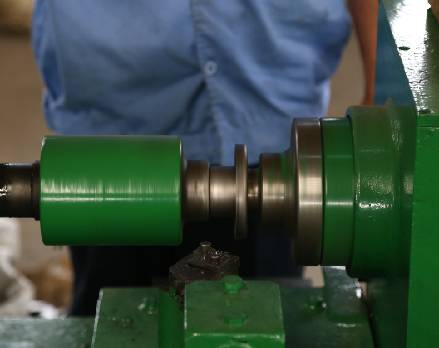 Afrikaans
Afrikaans  Albanian
Albanian  Amharic
Amharic  Arabic
Arabic  Armenian
Armenian  Azerbaijani
Azerbaijani  Basque
Basque  Belarusian
Belarusian  Bengali
Bengali  Bosnian
Bosnian  Bulgarian
Bulgarian  Catalan
Catalan  Cebuano
Cebuano  Corsican
Corsican  Croatian
Croatian  Czech
Czech  Danish
Danish  Dutch
Dutch  English
English  Esperanto
Esperanto  Estonian
Estonian  Finnish
Finnish  French
French  Frisian
Frisian  Galician
Galician  Georgian
Georgian  German
German  Greek
Greek  Gujarati
Gujarati  Haitian Creole
Haitian Creole  hausa
hausa  hawaiian
hawaiian  Hebrew
Hebrew  Hindi
Hindi  Miao
Miao  Hungarian
Hungarian  Icelandic
Icelandic  igbo
igbo  Indonesian
Indonesian  irish
irish  Italian
Italian  Japanese
Japanese  Javanese
Javanese  Kannada
Kannada  kazakh
kazakh  Khmer
Khmer  Rwandese
Rwandese  Korean
Korean  Kurdish
Kurdish  Kyrgyz
Kyrgyz  Lao
Lao  Latin
Latin  Latvian
Latvian  Lithuanian
Lithuanian  Luxembourgish
Luxembourgish  Macedonian
Macedonian  Malgashi
Malgashi  Malay
Malay  Malayalam
Malayalam  Maltese
Maltese  Maori
Maori  Marathi
Marathi  Mongolian
Mongolian  Myanmar
Myanmar  Nepali
Nepali  Norwegian
Norwegian  Norwegian
Norwegian  Occitan
Occitan  Pashto
Pashto  Persian
Persian  Polish
Polish  Portuguese
Portuguese  Punjabi
Punjabi  Romanian
Romanian  Russian
Russian  Samoan
Samoan  Scottish Gaelic
Scottish Gaelic  Serbian
Serbian  Sesotho
Sesotho  Shona
Shona  Sindhi
Sindhi  Sinhala
Sinhala  Slovak
Slovak  Slovenian
Slovenian  Somali
Somali  Spanish
Spanish  Sundanese
Sundanese  Swahili
Swahili  Swedish
Swedish  Tagalog
Tagalog  Tajik
Tajik  Tamil
Tamil  Tatar
Tatar  Telugu
Telugu  Thai
Thai  Turkish
Turkish  Turkmen
Turkmen  Ukrainian
Ukrainian  Urdu
Urdu  Uighur
Uighur  Uzbek
Uzbek  Vietnamese
Vietnamese  Welsh
Welsh  Bantu
Bantu  Yiddish
Yiddish  Yoruba
Yoruba  Zulu
Zulu troughing idlers manufacturer
Understanding Troughing Idlers The Unsung Heroes of Conveyor Systems
In the expansive world of bulk material handling, certain components often go unnoticed despite playing a crucial role in operational efficiency. Among these are troughing idlers, a fundamental part of conveyor systems widely used in various industries such as mining, agriculture, and manufacturing. This article delves into the significance of troughing idlers, exploring their design, functionality, and the impact of manufacturers on their performance.
What Are Troughing Idlers?
Troughing idlers are roll systems that support the belt of a conveyor. Unlike flat idlers, troughing idlers have a concave design that allows the conveyor belt to maintain a specific shape, thus providing better containment of bulk materials during transport. Typically arranged in a v shape, these idlers reduce the spillage of material and increase the belt’s load-carrying capacity. Made from durable materials like steel, rubber, and plastic, troughing idlers are engineered to withstand the harsh conditions often found in industrial settings.
Design and Functionality
The design of troughing idlers is pivotal to their performance. They come in various configurations, with standard troughing angles being 20, 35, or even 45 degrees. The choice of angle significantly affects the conveyor belt's behavior, material handling capacity, and overall stability.
A well-designed troughing idler system ensures minimal friction between the belt and idlers, which translates to reduced energy consumption and wear on both the belt and the idlers. Furthermore, the idler's alignment and spacing are critical in preventing belt misalignment and ensuring smooth operation.
Another critical aspect of their functionality is their role in absorbing the stresses exerted by the bulk material. The support offered by the idlers helps to maintain the belt’s tension and shape, allowing for a consistent and efficient transport of materials over long distances.
troughing idlers manufacturer

The Role of Manufacturers
Troughing idler manufacturers play a pivotal role in the conveyor systems’ performance through the innovation and quality of their products. The manufacturing process involves rigorous quality control and testing to meet industry standards. High-quality materials and precision engineering ensure that the idlers can handle the dynamic loads and harsh environments they are often subjected to.
Additionally, manufacturers are increasingly focusing on the technological advancements in conveyor systems, such as the integration of smart technologies and the adoption of eco-friendly materials. The market sees a shift towards developing idlers that minimize energy consumption, reduce noise, and extend service life, contributing to more sustainable operations within various industries.
Furthermore, customized solutions are becoming more prevalent as manufacturers recognize the diverse needs of their clients. Tailoring idlers to fit specific operational requirements not only enhances efficiency but also minimizes downtime, which is crucial for maintaining productivity in fast-paced industrial environments.
Conclusion
In summary, troughing idlers are a vital component of conveyor systems, ensuring the efficient movement of materials across various industries. Their unique design and functionality facilitate effective bulk material handling while minimizing losses and operational costs. The importance of manufacturers in producing high-quality, innovative troughing idlers cannot be overstated, as they directly influence the overall performance and reliability of conveyor systems.
As industries continue to evolve and face new challenges, the development of advanced troughing idlers will be essential for maintaining competitiveness and efficiency. Understanding the intricacies of these components will help stakeholders make informed decisions when selecting the right systems for their operations. Troughing idlers may not always be in the spotlight, but they undoubtedly serve as the unsung heroes in the world of conveyor technology.
-
Revolutionizing Conveyor Reliability with Advanced Rubber Lagging PulleysNewsJul.22,2025
-
Powering Precision and Durability with Expert Manufacturers of Conveyor ComponentsNewsJul.22,2025
-
Optimizing Conveyor Systems with Advanced Conveyor AccessoriesNewsJul.22,2025
-
Maximize Conveyor Efficiency with Quality Conveyor Idler PulleysNewsJul.22,2025
-
Future-Proof Your Conveyor System with High-Performance Polyurethane RollerNewsJul.22,2025
-
Driving Efficiency Forward with Quality Idlers and RollersNewsJul.22,2025





























